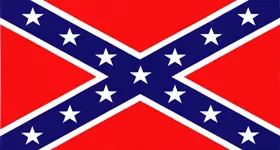Civil War Battles |
Colonial Wars |
American Wars |
Link To This Page — Contact Us —
The Battle of Adairsville
May 17, 1864 in Adairsville, Georgia
Atlanta Campaign
Union Forces Commanded by:
Maj. Gen. William T. Sherman
Confederate Forces Commanded by: Gen. Joseph E. Johnston
**Missing and Captured Conclusion: Confederate Victory |
 |
BATTLE SUMMARY
The Battle of Adairsville was a Confederate delaying action that allowed Gen. Joseph E. Johnston to bait a trap for the Union army at Cassville.
Following the Battle of Resaca, May 13–15, Johnston's army retreated southward while Maj. Gen. William T. Sherman pursued. Failing to find a good defensive position south of Calhoun, Johnston continued to Adairsville, while the Confederate cavalry fought a skillful rearguard action and kept Sherman away from Atlanta.
Once across the Oostanaula River, Johnston sought to make a stand and draw the Federals into a costly assault. He expected to find favorable terrain near Calhoun, but in this he was disappointed. On May 16, during the night, he led the Confederates southward toward Adairsville. Sherman followed, dividing his forces into 3 columns, and advancing on a broad front. There were skirmishes all along the route, but the main bodies were not engaged.
At Adairsville, Johnston again hoped to find a position in which he could give battle, but there too the terrain was unsuitable for defense and the Confederate commander was forced to continue his withdrawal. As he fell back, however, Johnston devised a strategem that he hoped would lead to the destruction of a part of Sherman's forces. There were two roads leading south from Adairsville—one south to Kingston, the other southeast to Cassville. It seemed likely that Sherman would divide his armies so as to use both roads. This would give Johnston the opportunity to attack one column before the other could come to its aid.
On May 17, skirmish fire continued throughout the day and into the early evening. When the Confederates abandoned Adairsville during the night, Johnston sent Maj. Gen. William J. Hardee's Corps to Kingston, while he fell back toward Cassville with the rest of his army. He hoped that Sherman would believe most of the Southerners to be in Kingston and concentrate the bulk of his forces there. Hardee would then hold off the Northerners at Kingston while Johnston, with Gen. Leonidas Polk and Maj. Gen. John B. Hood, destroyed the smaller Union column at Cassville.
Sherman reacted as Johnston hoped, ordering Maj. Gen. James B. McPherson and the bulk of Maj. Gen. George H. Thomas's army toward Kingston while sending only Maj. Gen. John Schofield and one corps of Thomas's army along the road to Cassville.
On May 19, during the morning, Johnston ordered Hood to march along a country road a mile or so east of the Adairsville-Cassville Road and form his corps for battle facing west. While Polk attacked the head of the Federal column, Hood was to assail its left flank. As Hood was moving into position, he found Northern soldiers to the east. This was a source of great danger, for had Hood formed facing west, these Federals would have been in position to attack the exposed flank and rear of his corps. After a brief skirmish with the Northerners, Hood fell back to rejoin Polk. Johnston, believing that the opportunity for a successful battle had passed, ordered Hood and Polk to move to a new line east and south of Cassville, where they were joined by Hardee who had been pushed out of Kingston.
On May 20,
Johnston formed his army on a ridge and hoped that Sherman would attack him there. As usual, Johnston was confident of repulsing the Union army.
During the night, the Confederates withdrew across the Etowah River. As they fell back, their feelings were mixed. They had lost a very strong position at Dalton, and had fallen back from Resaca, Calhoun, and Adairsville. Now they were retreating again under cover of darkness. That morning as they prepared for battle, their spirits had been high. Now their disappointment was bitter. Although morale would revive in the next few days, many Confederate soldiers would never again place as much confidence in Johnston's abilities as they once had.
That night, the Confederate leaders held a council of war. Exactly what happened at the council is a matter of dispute. According to Johnston, Polk and Hood reported that their lines could not be held and urged that the army retreat. Believing that the fears of the corps commanders would be communicated to their men and thus weaken the army's confidence, Johnston yielded to these demands, even though he thought the position to be defensible.
According to Hood, whose recollection of the council differs markedly from Johnston's, he and Polk told Johnston that the line could not be held against an attack but that it was a good position from which to move against the enemy. Johnston, however, was unwilling to risk an offensive battle and decided to fall back across the Etowah. No definite resolution of this dispute is possible, but most of the available evidence supports Hood's version of the conference. Certainly Johnston was not required to allow the advice of subordinates to overrule his own judgment. The responsibility for abandoning the Cassville position rests on Johnston.
